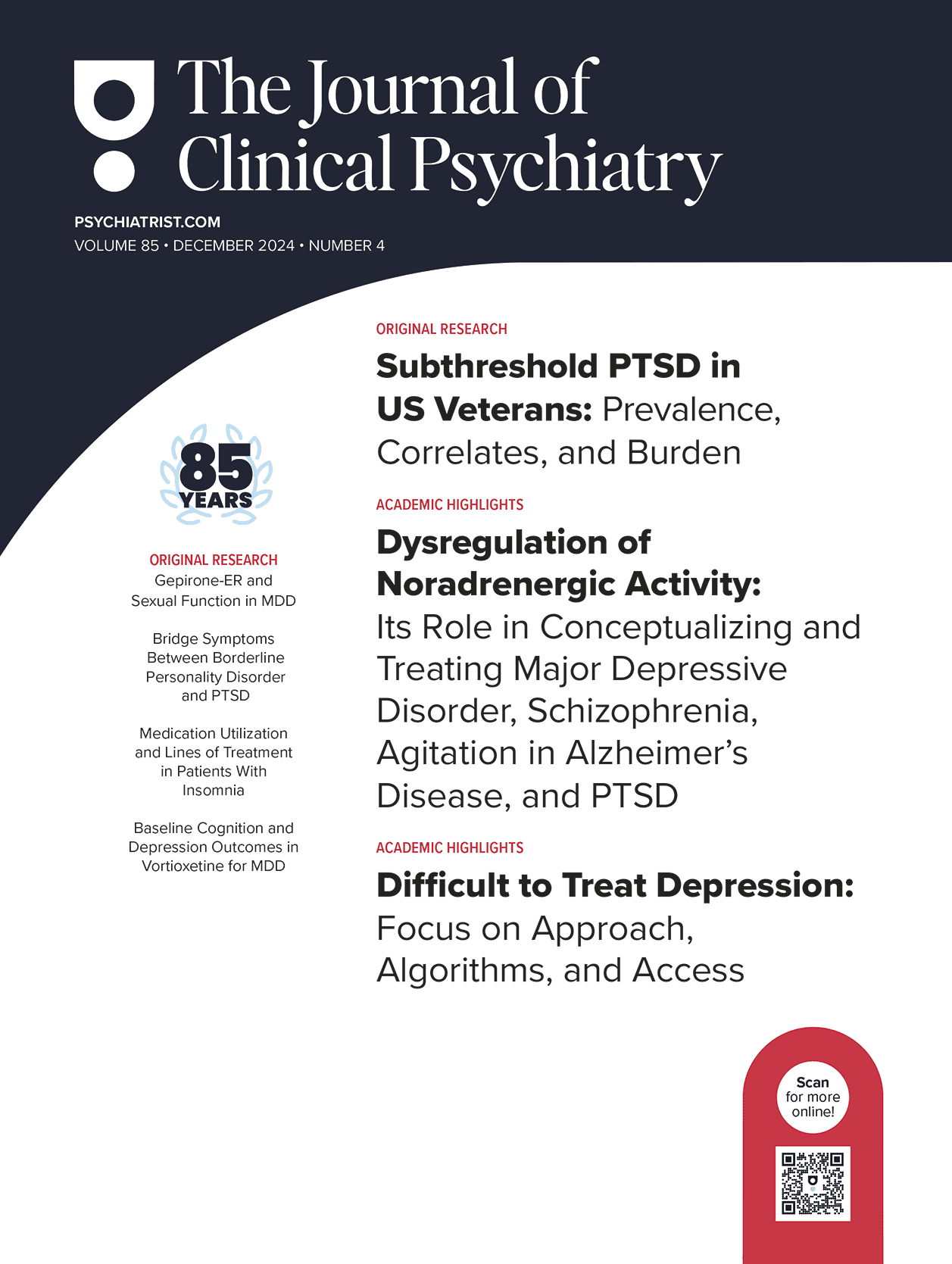The Child Behavior Checklist-Pediatric Bipolar Disorder Profile Predicts a Subsequent Diagnosis of Bipolar Disorder and Associated Impairments in ADHD Youth Growing Up: A Longitudinal Analysis (original) (raw)
Article April 21, 2009
; Carter R. Petty ; Michael C. Monuteaux ; Margaret Evans ; Tiffany Parcell ; Stephen V. Faraone ; Janet Wozniak
J Clin Psychiatry 2009;70(5):732-740
Article Abstract
Objective: To examine the predictive utility of the Child Behavior Checklist-Pediatric Bipolar Disorder (CBCL-PBD) profile to help identify children at risk for bipolar disorder.
Method: Subjects were ascertained from 2 identically designed longitudinal case-control family studies of subjects (males and females aged 6-18 years) with DSM-III-R attention-deficit/hyperactivity disorder (ADHD). Based on data from the baseline assessment, ADHD subjects without a lifetime diagnosis of bipolar disorder were stratified by the presence (CBCL-PBD positive, N=28) or absence (CBCL-PBD negative, N=176) of a CBCL-PBD score ≥ 210 (total of attention, aggression, and anxious/depressed subscales). Subjects were comprehensively assessed at follow-up with structured psychiatric interviews. Data were collected from April 1988 to February 2003.
Results: Over a mean follow-up period of 7.4 years, a positive CBCL-PBD score predicted subsequent diagnoses of bipolar disorder, major depressive disorder, and conduct disorder, as well as impaired psychosocial functioning and higher risk for psychiatric hospitalization.
Conclusion: This work suggests that a positive CBCL-PBD score based on elevations on the attention problems, aggressive behavior, and anxious/depressed subscales predicts subsequent pediatric bipolar disorder and associated syndrome-congruent impairments. If confirmed in other studies, the CBCL-PBD score has the potential to help identify children at high risk to develop bipolar disorder.
Save
Cite
INFORMATION FROM INDUSTRY

Vol 85 • 2024 • Number 4